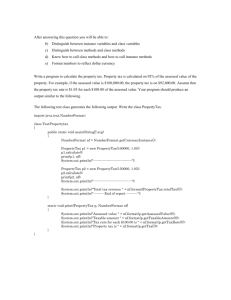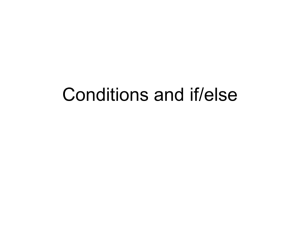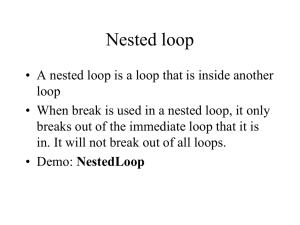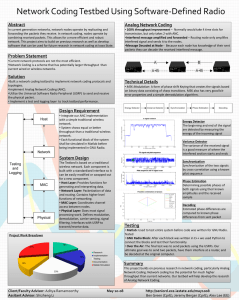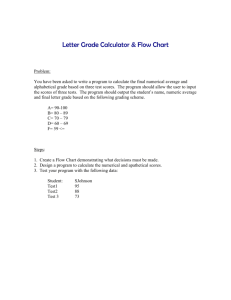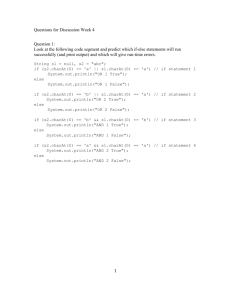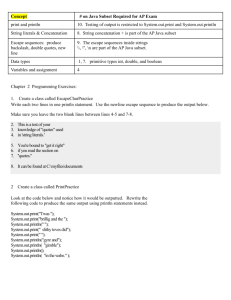jjb07u
advertisement
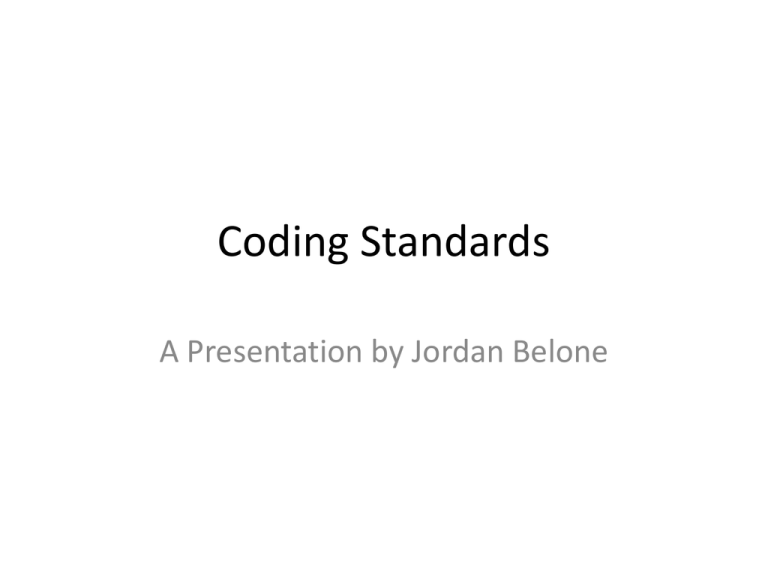
Coding Standards
A Presentation by Jordan Belone
What are They?
• Rules - Must
• Guidelines - Should
• Physical Document
Open Source
• GNU
http://www.gnu.org/prep/standards/standards.html
• Firefox
https://developer.mozilla.org/En/Developer_Guide/Cod
ng_Style
Prominent Works
-Kernighan and Plauger (1974)
-Fortran and PL/I
- Contains important points
Prominent Works (2)
-Rob Pike
-More recent (Published in
1999)
- Regarded as “a business
essential” and has been
proven to save money
-C/C++/Java
Kernighan Quotations
• "Where there are two bugs, there is likely to
be a third.“
• “Don't patch bad code - rewrite it."
• "Don't stop with your first draft."
Why Have Coding Standards?
•
•
•
•
•
Software Maintenance
Less Bugs
Teamwork
Team switching
Cost
TYPES OF CONDING STANDARDS
• BY COMPANY
• BY LANGUAGE
CODING STANDARDS
EXAMPLES
Common Practice - Indentation
• Identifies scope in some programming languages
for the compiler
• Indentation of
– Functions
– Objects
– Etc
• Unnecessary in Freeform programming <Java>
• Gives an indication of scope in freeform languages
but doesn’t affect program
Example
Compare
if (g < 17 && h < 22 || i < 60) { return true; } else {System.out.println (“incorrect”) ; return false;
}
To
if (g < 17 && h < 22 || i < 60)
{
return true;
}
else
{
System.out.println(“incorrect”);
return false;
}
- Easier to Read
- Easier to Understand
- Easier to maintain
Common Practice -Commenting Code
• ALL PROGRAMMING LANGUAGES
• Comments should
- Clearly demonstrate the function of the code,
both to yourself and to other developers
- Not too long
• Comments should NOT be
- Every line (Exceptions for functional languages)
- Overcomplicated
Common Practice - Whitespace
• Very important but often overlooked
• Makes the code easier to read
• Especially important with large programs, lack
of whitespace can be very confusing
Example
for(int i=0;i<40;i++)
{system.out.println(i);}
for( int i = 0 ; i < 40 ; i++ )
{
system.out.println(i);
}
Common Practice – Naming Variables
• Variable names are often thought to be less
important but they are vital to understanding
certain pieces of code.
• In the majority of programming languages,
variables can be assigned almost any name.
Example
If(a < h && z <o && t<e)
{
return true;
}
else
{
return false;
}
This code could
do anything!
Example quotations from different
coding standards
•
•
•
•
•
•
•
•
•
•
•
•
•
•
•
•
•
Use spaces not TABs.
Three character indent (four is more common; get agreement and enforce with a tool).
No long lines. Limit the line length to a maximum of 120 characters.
No trailing whitespace on any line.
Put brace on a new line.
Single space around keywords, e.g. if (.
Single space around binary operators, e.g. 42 + 69
No space around unary operators, e.g. ++i
No space before parentheses with functions/macros, e.g. fred( 42, 69 )
Single space after parentheses with functions/macros, e.g. fred( 42, 69 )
Single space after comma with functions/macros, e.g. fred( 42, 69 )
Layout lists with one item per line; this makes it easier to see changes in version control.
One declaration per line.
Function calls with more than two arguments should have the arguments aligned vertically.
Avoid big functions and methods. Ditto for large classes and large files.
Avoid deep nesting.
Always use braces with if statements, while loops, etc. This makes changes shorter and clearer in
version control.
SUMMARY
• EASE OF INFORMATION EXTRACTION
• LOOKING FORWARD
